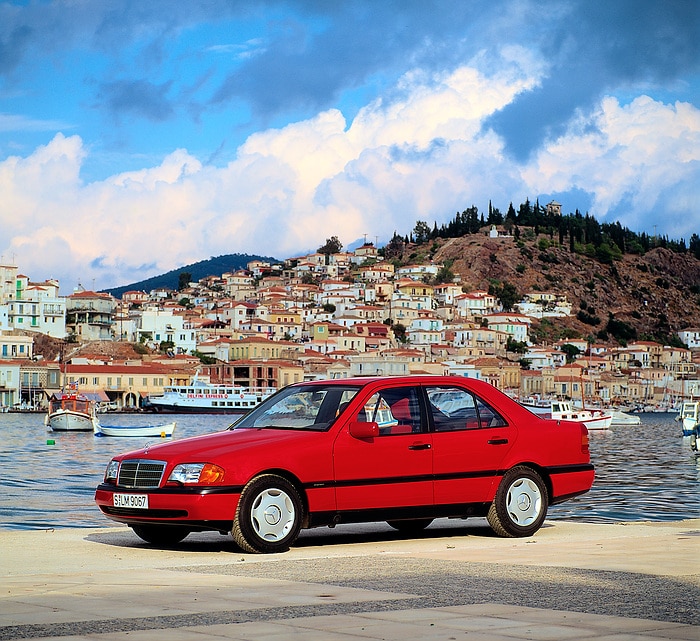- Debut of the 202 series 30 years ago
- Classics sporting the three-pointed star lead the H-plate statistics
- The Mercedes-Benz Classic Center in Fellbach celebrates its 30th birthday in 2023
- Further Mercedes-Benz and Mercedes-AMG models qualify as classic cars
Stuttgart. Classic vehicles are becoming increasingly popular – and Mercedes-Benz classics lead the statistics by a clear margin. The group of vehicles with the star that can obtain a classic car certificate and thus registration with the coveted H (for historic) German licence plate is set to grow in 2023. Included among them will be the first C-Class of the 202 series, produced in large numbers, which was launched in 1993 as the successor to the 190 model (W 201). Also being manufactured 30 years ago, but in far smaller numbers, were the luxurious 500 GE V8 off-roader in the 463 series and a range of powerful AMG models. Likewise, the new engine variants for the successful 124 series saloons made their debut in 1993 – they too can be registered with the H licence plate for the first time in 2023. Over the coming years, the range of classic cars from three-pointed-star brand will increase significantly. One reason for this is the strategic model offensive that began in 1996.
The H licence plate was introduced on 1 January 1997. A classic car certificate is required to obtain this special registration. Essential prerequisites for the allocation of this coveted classification as a technical cultural asset are a minimum age of 30 years and a well-maintained original condition. The growth in numbers has been rapid. In 2006, only 140,169 vehicles were furnished with this special registration plate for historical models; today, there are no fewer than 648,365 classic cars. Large as this number may seem, set against the total number of cars registered in Germany, classic cars only account for 1.3 percent. Due to the low mileage of classic cars compared to younger cars, the share of total kilometres travelled is far lower still.











